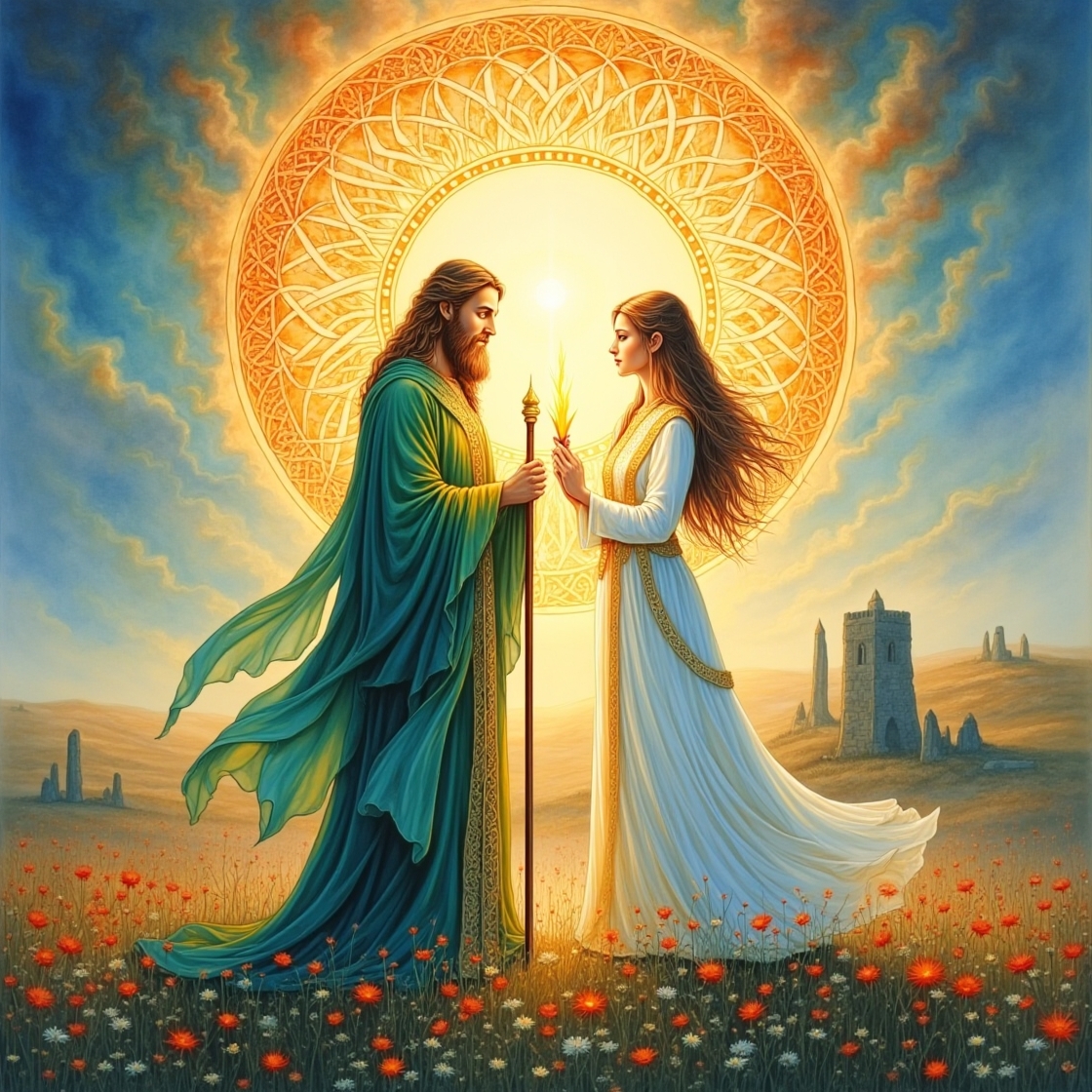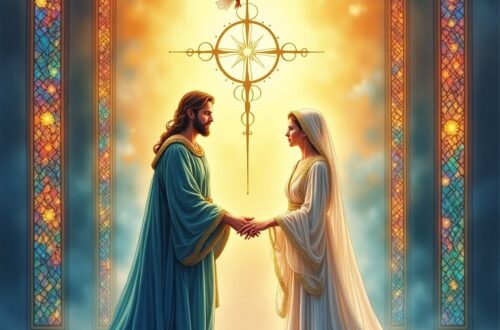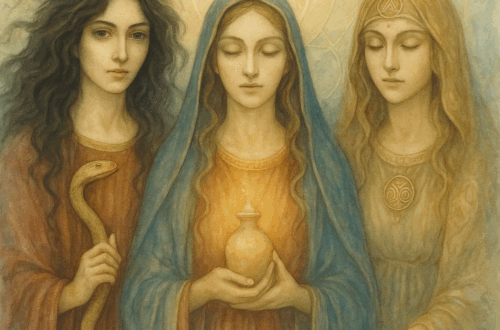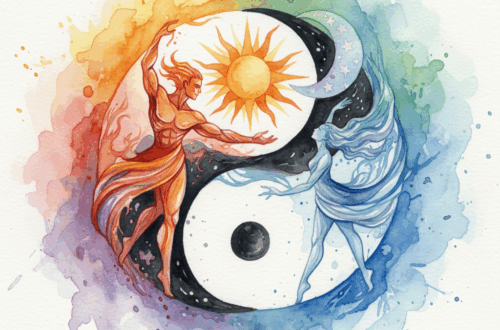
The Dance of Dualities: St. Patrick and St. Brigid in the Light of Esoteric Christianity
In the sacred landscape of Celtic spirituality, two luminous figures stand as pillars of Irish spiritual heritage, St. Patrick and St. Brigid. Their stories weave together in a tapestry of divine masculine and feminine energies that continue to resonate through the ages.
The Divine Masculine: Patrick’s Mission
Patrick arrived in Ireland with a mission of transformation. As a former slave who returned to the land of his captivity, he embodied the archetype of the wounded healer. His approach to spreading Christianity was often characterized by confrontation with the existing druidic order, targeting those who advised kings and held power.
Patrick arrived in Ireland with a mission of transformation. As a former slave who returned to the land of his captivity, he embodied the archetype of the wounded healer. His approach to spreading Christianity was often characterized by confrontation with the existing druidic order, targeting those who advised kings and held power.
The Divine Feminine: Brigid’s Embrace
Brigid stands as the embodiment of the divine feminine in Celtic Christianity. Her approach to spiritual transformation was gentler and more inclusive than Patrick’s, directed toward common people who continued to follow pagan rituals. Where Patrick confronted, Brigid embraced.
As both goddess and saint, Brigid represents the seamless continuity between ancient wisdom and emerging Christian consciousness. Her miracles were practical and nurturing – replacing food given to the hungry, healing the blind and mute, guiding builders with useful interventions. She found “peaceful resolutions to violent situations”, embodying the receptive, inclusive nature of the divine feminine.
Brigid’s sanctuary at Kildare maintained the eternal flame, tended only by women, preserving the sacred feminine principle even as Christianity spread across Ireland. This flame symbolizes the unbroken connection to ancient wisdom, the eternal light of consciousness that burns regardless of the name we give it.
Esoteric Christianity: The Hidden Synthesis
The relationship between Patrick and Brigid reveals a profound truth about esoteric Christianity – that beneath the exoteric religious forms lies universal wisdom that transcends dogma. Their partnership suggests not opposition but complementarity, the sacred marriage of divine masculine and feminine principles.
Esoteric Christianity recognizes that “No religion is higher to us than the striving for truth”. This principle liberates us from blind adherence to religious authority and invites us to experience direct spiritual knowledge. As the writer of the Gospel of John understood, true Christianity is not about reading and understanding a book in the conventional way, but about experiencing its living truth.
The esoteric tradition teaches that freedom comes not from rejecting religion but from penetrating to its mystical core. A free spirit “acts according to intuitions selected from the totality of his world of ideas by thinking,” not out of experience or external authority. This is the essence of spiritual freedom – to act from direct intuition of truth rather than conditioned patterns.
The Sacred Marriage
Perhaps the most beautiful aspect of the Patrick-Brigid relationship is their spiritual partnership. The suggestion that they shared “one heart and one mind” echoes the sacred partnerships we see throughout spiritual history – Francis and Clare, and at the root, Jesus and Mary Magdalene.
This points to the esoteric understanding that spiritual evolution requires the integration of masculine and feminine principles within each soul. Patrick may have recognized Brigid as his worthy successor, passing his spiritual mantle to her. Their relationship transcends the simplistic narrative of Christianity versus paganism, suggesting instead a conscious blending of ancient wisdom with emerging revelation.
Freedom Through Integration
True spiritual freedom comes not from rejecting religion but from integrating its wisdom into direct experience. The Celtic Christian tradition that emerged from Patrick and Brigid’s influence was unique – circular sanctuaries rather than rectangular ones, saints who spoke with animals and plants, illuminated manuscripts that celebrated the divine through beauty.
This integration is the hallmark of the awakened consciousness. As we honor both Patrick and Brigid, we’re invited to transcend the false dichotomy between tradition and freedom, between masculine assertion and feminine receptivity. The divine dance of these complementary energies creates the space for authentic spiritual awakening.
In our modern quest for spiritual freedom, we need not reject religion but rather penetrate to its esoteric core, where all traditions converge in the direct experience of divine presence. Patrick and Brigid stand as twin flames illuminating this path – not as competitors but as complementary expressions of the one divine light that shines through all authentic spiritual traditions.
The eternal flame of Brigid and the missionary zeal of Patrick continue to burn in the heart of anyone who seeks truth beyond dogma, who honors both the divine masculine and feminine within, and who recognizes that true freedom comes not from rejection of tradition but from its conscious transformation.





